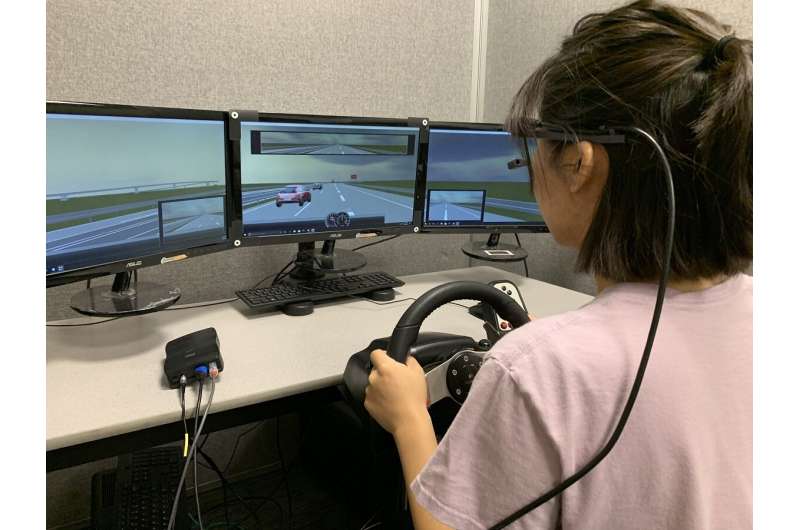Researchers at the University of Missouri are looking at the importance of keeping your eyes on the road with two new uses of eye-tracking technology in relation to vehicle collision avoidance warnings and rear-end accidents. Credit: University of Missouri
"Keep your eyes on the road."
With the recent advances in vehicle-assisted safety technology and in-car displays, this old adage has a new meaning, thanks to two new applications of eye-tracking technology developed by researchers at the University of Missouri.
Designing a better collision avoidance warning
Observing how someone's eyes change—specifically the pupil—while they respond to an alert given by a vehicle collision avoidance warning could one day help scientists design safer systems.
"Prior to a crash, drivers can be easily distracted by an alert from a collision avoidance warning—a popular feature in new vehicles—and we feel this could be a growing problem in distraction-related vehicle crashes," said Jung Hyup Kim, an assistant professor of industrial and manufacturing systems engineering in the MU College of Engineering. "Therefore, a two-way communication channel needs to exist between a driver and a vehicle. For instance, if a driver is aware of a possible crash, then the vehicle does not have to warn the driver as much. However, if a vehicle provides an alert that, by itself, creates a distraction, it could also cause a crash."
Kim and Xiaonan Yang, a graduate student at MU, watched how people's pupils changed in response to their physical reactions to a collision avoidance warning by a vehicle-assisted safety system. Researchers believe they have enough data to begin the next step of developing a two-way communication model.
Evaluating rear-end accidents from a driver's perspective
A person's pupil could also help scientists find a way to decrease distracted driving crashes through a first-hand perspective into a driver's behavior, according to Kim and Rui Tang, a graduate student at MU. Using a driving simulator at the MU College of Engineering, the researchers evaluated a driver's physical behavior in real-time by focusing on the driver's eyes as the crash happened.
"We saw the size of a person's pupil changed depending on the behavioral response to the severity of the accident," Kim said. "Now, we want to take that data, find common patterns and build a model to test how we could help decrease distracted-driving crashes."
The conference papers, "Evaluating rear-end vehicle accident using pupillary analysis in a driving similar environment," and "Pupillary response and EMG predict upcoming responses to collision avoidance warning," were presented at the 2019 International Conference on Applied Human Factors and Ergonomics in Washington, D.C.
Provided by University of Missouri























